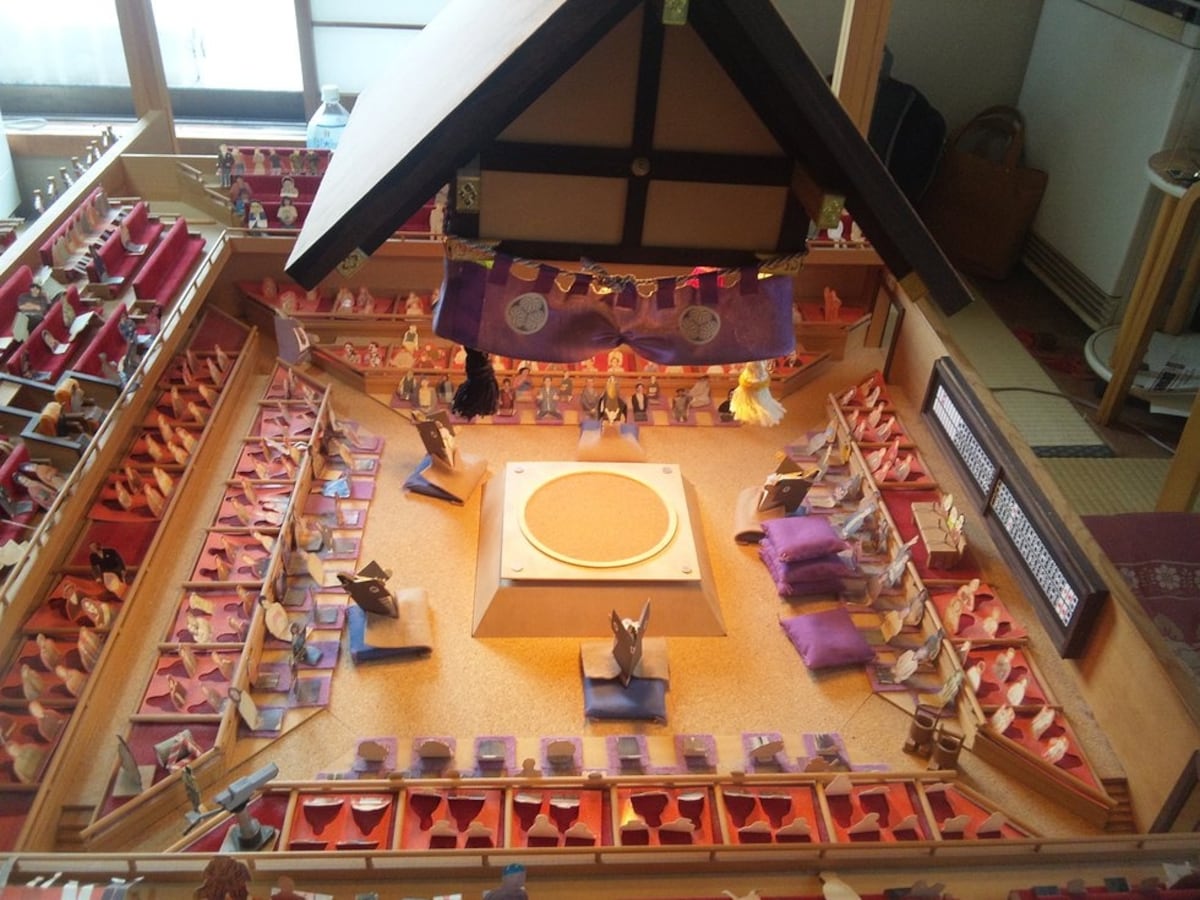Kamizumo: The Art of Paper Sumo

Kamizumo (紙相撲) is exactly what the name suggests: paper sumo. It’s said to have originated in the mid-Edo Period (1603-1868), accompanying the rise of sumo as a popular sport, when other versions using wooden wrestlers appeared as well.
By Michael Kanerthttps://www.youtube.com/watch?v=ICaHtaemEwQ
In the most common version seen today, paper wrestlers made from origami or illustrated cutouts are placed on a cardboard box with a ring drawn on it. The paper wrestlers start a little apart, and the two opposing players try to move their wrestlers by repeatedly tapping the box. The first wrestler to fall or leave the ring loses.
https://www.youtube.com/watch?v=2281r8yIP6I
The advantage of the origami version is that, if you know how to make the wrestlers, it can be played basically anywhere.
Based on illustrations from the Edo Period, it seems early kamizumo involved blowing on the paper wrestlers, but tapping is the standard method used today.
Tokugawa-Style Kamizumo

There’s a more formal subset of kamizumo known as Tokugawa-style kamizumo (Tokugawa-shiki kamizumo).
In 1954, at the age of 17, Yoshiyuki Tokugawa made his own cutout kamizumo paper doll designs and specified a fixed hand orientation for the wrestlers, with one hand up and the other down. He also established the rule that the two wrestlers must start together, supporting each other. He even took it as far as creating sumo stables and rankings across a tournament, just like in real sumo.
https://www.youtube.com/watch?v=Ag1YDLWFoj4
For years, Tokugawa just played with friends. But when the concept was picked up in a magazine in 1974, it took off nationwide, leading to a boom in kamizumo. While the craze has since died down, the Nihon Kamizumo Kyokai (Japan Kamizumo Association) still exists to this day, with its own top-ranked Yokozuna.



